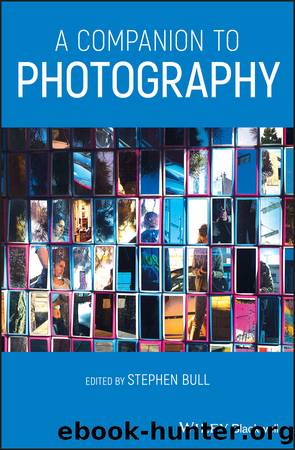A Companion to Photography by Bull Stephen;

Author:Bull, Stephen; [Bull, Stephen]
Language: eng
Format: epub
Publisher: John Wiley & Sons, Incorporated
Published: 2019-12-23T00:00:00+00:00
Conclusion
For most of its history, the fashion photograph has existed as a commercial image, either as an advertisement or as editorial content in magazines. Over the past five decades, some of the âbestâ of this enormous imageâbank has found its way into monographs and edited collections or been reâsited in the museum or on the gallery wall. Having finally broached the fiercely defended barricade that divided the categories of commerce and art, in the twentyâfirst century, the fashion imageâtrue to its reputation as a restless formâtraverses and complicates a different set of categories. In the vast, decentralized, and fragmented terrain of the Internet, the fashion magazine is no longer the default position for the production or the consumption of fashion photography. While the majority of creative or innovative fashion photography continues to be produced by professionals for initial publication in the traditional form of print media, brands are increasingly developing and releasing Instagramâonly campaigns (Sherman 2018). Two formerly minor categories of fashion photographyâcatwalk documentation and streetâstyleâare published directly online, in the first instance, making fashion information immediately accessible and, in the second, recalibrating the network of influence between fashion markets and media.
Fashion brands and publications continue to produce new advertising campaigns and editorial content, as well as opening up access to archival imagery, adding to an endless stream of fashion photographs created, published, or embedded by amateurs and professionals, from bloggers and influencers to museums and endâconsumers. Complicating any categorization of âamateurâ sites as being ânonâcommercialâ is the tendency of the industry to target any niche that could be transformed into an engaged consumer base, as key players are invited to partner with brands and monetize their audience (see Connell 2013; Lewis 2015; Luvaas 2016; Findlay 2017). Eâcommerce systems (such as shoppable apps or âclick and buyâ technology) are changing the ways in which fashion can be marketed and purchased online. Any image is now potentially a commercial image (BOF Team 2017; Sherman 2018), fulfilling the prediction that âthe entire web could start to look like a radically decentralized marketplace, where any encounter with a piece of inspiring content can become a saleâ (Kansara 2012).
While critical study of the rapidly evolving field of the digital production and consumption of fashion imagery has gathered pace (see Mora and Rocamora 2015; Rocamora 2017; de Perthuis and Findlay 2019), scholarly consideration of the most recent technological developments is currently underâtheorized. Closely related to fashion photography, and also offering scope for further research, is the field of moving imagesâthe online fashion film, webcam, and interactive media. From early experimental, technologicallyâdriven, and nonâcommercial projects (showcased on SHOWstudio, the forum launched by Nick Knight and initially edited by Penny Martin), the fashion film has gone from an âextra aesthetic indulgenceâ (Beard 2008, p. 184) to an essential element of any major brand campaign or collection, with practitioners from fashion, art, and film backgrounds collaborating to contribute to a medium that, it has been argued, redefines the fashion image as no longer âstillâ (see Khan 2012; UhlÃrová 2013).
Download
This site does not store any files on its server. We only index and link to content provided by other sites. Please contact the content providers to delete copyright contents if any and email us, we'll remove relevant links or contents immediately.
Shoot Sexy by Ryan Armbrust(17141)
Portrait Mastery in Black & White: Learn the Signature Style of a Legendary Photographer by Tim Kelly(16484)
Adobe Camera Raw For Digital Photographers Only by Rob Sheppard(16386)
Photographically Speaking: A Deeper Look at Creating Stronger Images (Eva Spring's Library) by David duChemin(16161)
Bombshells: Glamour Girls of a Lifetime by Sullivan Steve(13108)
Art Nude Photography Explained: How to Photograph and Understand Great Art Nude Images by Simon Walden(12347)
Perfect Rhythm by Jae(4621)
Pillow Thoughts by Courtney Peppernell(3395)
The Book of Joy by Dalai Lama(3217)
Good by S. Walden(2914)
The Pixar Touch by David A. Price(2739)
Fantastic Beasts: The Crimes of Grindelwald by J. K. Rowling(2543)
A Dictionary of Sociology by Unknown(2517)
Humans of New York by Brandon Stanton(2379)
Read This If You Want to Take Great Photographs by Carroll Henry(2303)
Stacked Decks by The Rotenberg Collection(2270)
On Photography by Susan Sontag(2129)
Photographic Guide to the Birds of Indonesia by Strange Morten;(2088)
Insomniac City by Bill Hayes(2083)
